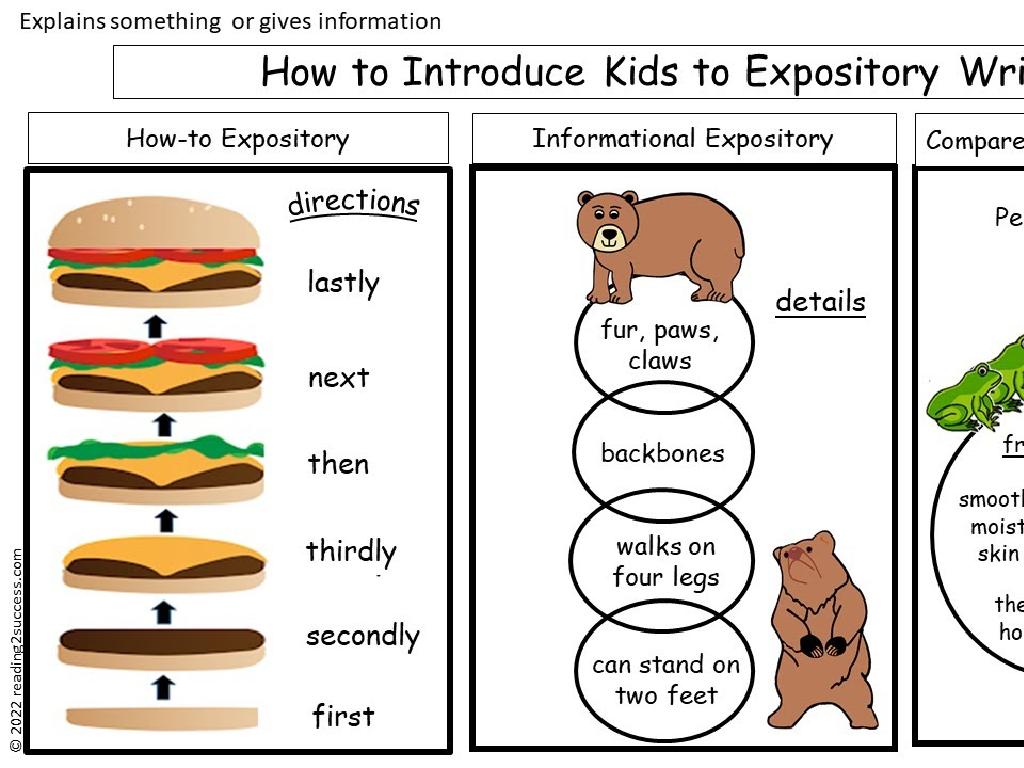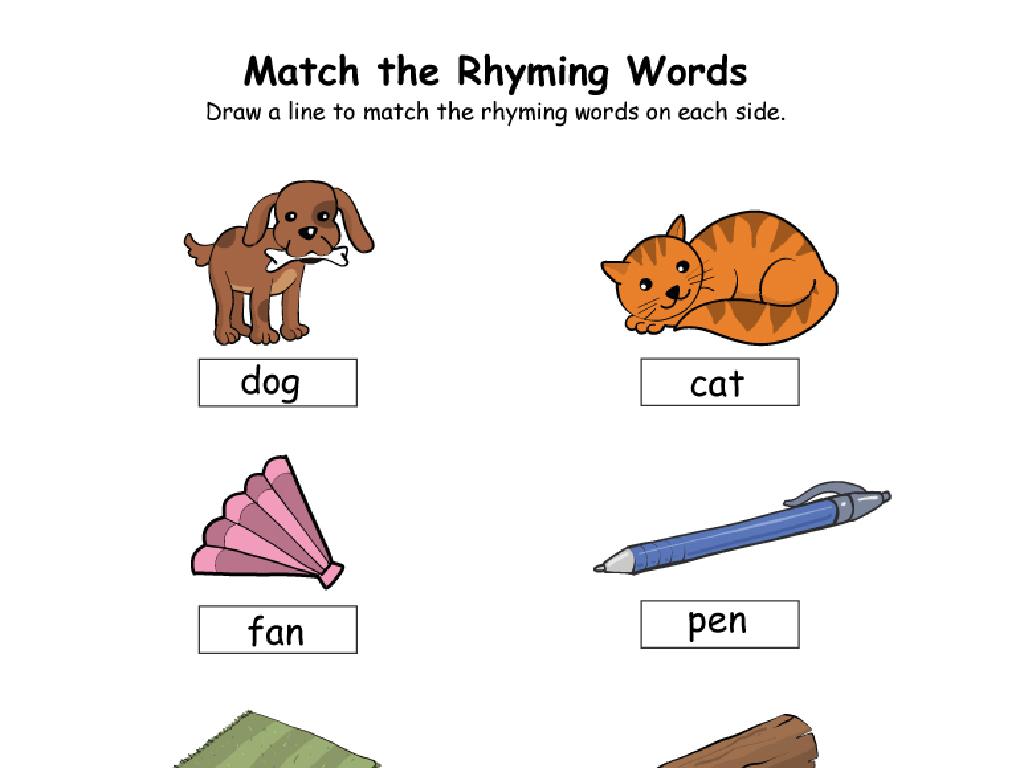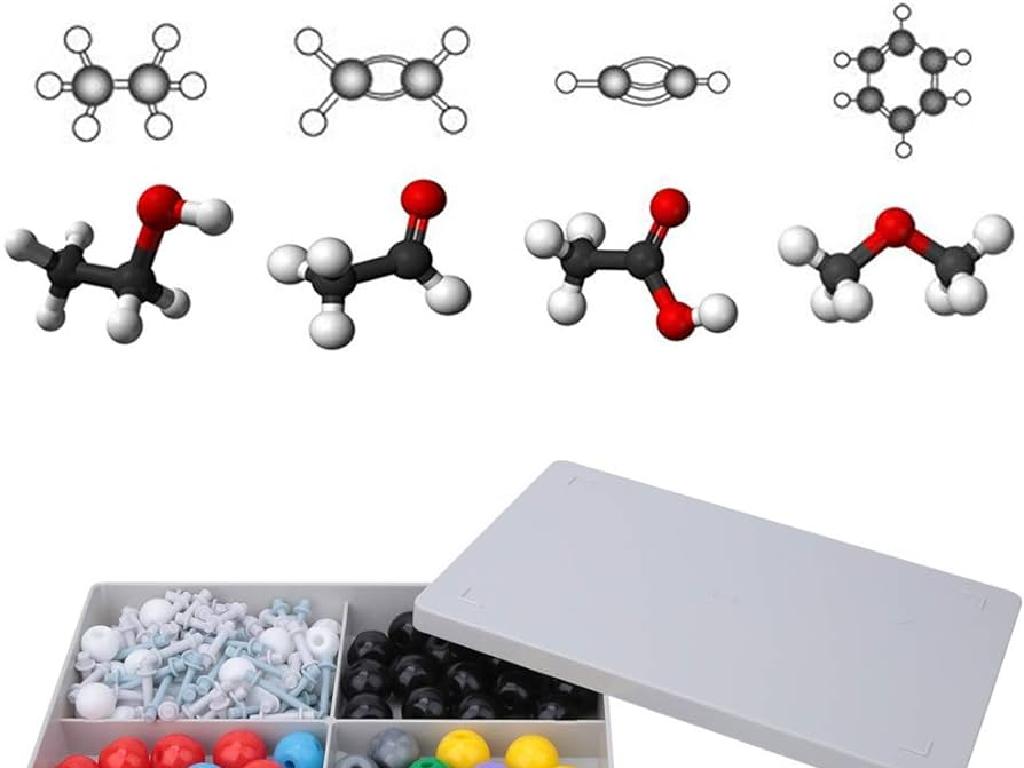Use The Correct Frequently Confused Word
Subject: Language arts
Grade: Fifth grade
Topic: Editing And Revising
Please LOG IN to download the presentation. Access is available to registered users only.
View More Content
Navigating Frequently Confused Words
– Understanding confused words
– Words that sound alike but have different meanings and spellings.
– Importance of word accuracy
– Using the right word helps convey the correct message and prevents misunderstandings.
– Examples: there, their, they’re
– ‘There’ refers to a place, ‘their’ shows possession, and ‘they’re’ is a contraction for ‘they are’.
– Practice makes perfect
|
This slide introduces students to the concept of frequently confused words, which are words that sound similar but have different meanings and uses. Emphasize the importance of choosing the correct word to avoid confusion and to make writing clear and precise. Provide examples with ‘there’, ‘their’, and ‘they’re’, explaining the context in which each should be used. Encourage students to practice by writing sentences or finding examples in their reading where these words are used correctly. This will help reinforce their understanding and ability to distinguish between these commonly mixed-up words.
Choosing the Right Word: Understanding Context
– Context determines word choice
– Words can have similar sounds but different meanings; context reveals the right one.
– Read sentences to spot errors
– Look for sentences that don’t make sense because a word is misused.
– Practice with example sentences
– We’ll work through sentences together and decide which word fits best.
– Choose the correct word
– You’ll get to pick the right word for each practice sentence.
|
This slide is aimed at helping students understand the importance of context in choosing the correct word, especially when dealing with frequently confused words. Start by explaining how similar-sounding words can have different meanings and how the surrounding text, or context, can help determine the correct usage. Engage the class by reading sentences aloud and working as a group to identify any errors in word choice. Then, move on to interactive practice where students choose the appropriate word for given sentences. Encourage them to explain their choices to reinforce their understanding. This activity will enhance their editing and revising skills, crucial for their writing proficiency.
Pair Practice: Mastering Confused Words
– Team up with a classmate
– Quiz each other using flashcards
– Discuss the correct word choice
– Why is ‘there’ right, but not ‘their’ in this sentence?
– Reflect on the learning
– Share what you’ve learned with the class
|
This activity is designed to reinforce the understanding of frequently confused words through peer interaction. Students will pair up and use flashcards to quiz each other. Each flashcard should have a sentence with a blank space where a commonly confused word belongs. The quizzing partner will offer multiple choices, and the guessing partner will select the word they believe fits best. After each turn, they should discuss why the chosen word is correct, considering context and meaning. This will help them grasp the nuances of word usage. Encourage students to reflect on their learning and share any interesting discoveries or tricky words they encountered. Prepare a set of flashcards with sentences that are age-appropriate and contain words that are commonly mixed up by fifth graders, such as ‘there/their/they’re’, ‘your/you’re’, and ‘its/it’s’.
Homophones and Homographs
– Define homophones and homographs
– Words that sound alike but have different meanings and spellings e.g., ‘two’ and ‘too’.
– Examples in sentences
– ‘I ate (eight) a sandwich.’ vs ‘The wind (wound) was very strong.’
– Class activity: Story exploration
– Find and highlight words in a story that sound the same but mean different things.
– Understanding usage in context
|
This slide introduces students to the concepts of homophones and homographs, which are frequently confused words with different meanings. Homophones sound the same but have different meanings and spellings, while homographs are spelled the same but have different meanings and sometimes different pronunciations. Provide clear examples to illustrate each concept. For the class activity, select a short story that contains several homophones and homographs. Divide the class into groups and have them identify and highlight these words. Discuss as a class why the correct usage of these words is important for clear communication. This activity will help students recognize and understand the context in which these words are used, enhancing their editing and revising skills.
Your vs. You’re: Mastering Confused Words
– ‘Your’ shows ownership
– Example: Is this your pencil?
– ‘You’re’ means ‘you are’
– Example: You’re going to love this game!
– Activity: Fill in the blanks
– Choose the correct word to complete sentences
– Practice makes perfect!
|
This slide is aimed at helping students differentiate between ‘your’ and ‘you’re.’ Begin by explaining that ‘your’ is a possessive pronoun used to indicate that something belongs to the person being spoken to, such as in ‘Is this your book?’. Then, clarify that ‘you’re’ is a contraction for ‘you are,’ and it’s used in sentences like ‘You’re going to be a great reader!’. For the activity, provide sentences with blanks where ‘your’ or ‘you’re’ should be used and ask students to fill them in correctly. Encourage students to read sentences aloud and explain their choices. This practice will reinforce their understanding and help them avoid common mistakes in writing.
To, Too, Two: Mastering Confused Words
– ‘To’ as a preposition or infinitive
– ‘To’ is used for direction: ‘I go to school.’
– ‘Too’ means ‘also’ or ‘excessively’
– ‘Too’ for addition or too much: ‘I want ice cream too.’ or ‘This is too spicy.’
– ‘Two’ is the number 2
– ‘Two’ refers to quantity: ‘I have two cats.’
– Group activity: sentence crafting
– Use all three words in one sentence correctly.
|
This slide introduces the commonly confused words ‘to’, ‘too’, and ‘two’. Begin by explaining that ‘to’ can be used as a preposition indicating direction or as part of an infinitive verb form. ‘Too’ is used when referring to an additional thing or situation, or to describe an excessive amount. ‘Two’ is simply the number after one. After the explanation, engage the class in a group activity where they create sentences using all three words correctly. This will help solidify their understanding through practice. For the activity, suggest creating sentences related to their daily lives to make it more relatable and fun. Provide guidance and examples to ensure clarity.
Practice Quiz: Confusing Words
– Answer multiple-choice questions
– Write down your answers
– Review answers in class
– We’ll go over each question together
– Clarify any confusing words
– Discuss why certain choices are correct
|
This slide introduces a practice quiz designed to test the students’ understanding of frequently confused words. The quiz will consist of multiple-choice questions, and students are expected to write down their answers independently. After completing the quiz, the class will review the answers together, providing an opportunity for collaborative learning. During the review, focus on explaining why specific words are often confused and how to distinguish between them using context. Encourage students to ask questions and participate in discussions to clarify any confusion. This activity will help reinforce their knowledge and improve their editing and revising skills.
Writing Workshop: Mastering Confused Words
– Craft a story with today’s words
– Swap stories for peer review
– Exchange your stories with a classmate
– Check each other’s word usage
– Look for today’s words and see if they’re used correctly
– Reflect on the learning experience
– Share what you’ve learned and discuss any difficulties
|
This slide outlines a classroom activity designed to help students practice using commonly confused words correctly. Students will first write a short story incorporating words that are often mixed up. After writing, they will exchange their stories with a peer and review each other’s work, focusing on the correct usage of the words discussed in class. This peer review process not only reinforces their understanding but also develops their editing skills. Finally, the class will come together to discuss what they’ve learned from the activity and any challenges they faced. This reflection helps solidify their knowledge and provides the teacher with feedback on areas that may need more attention.
Class Activity: Word Hunt
– Hunt for confused words in books
– Find ‘there/their/they re’ or ‘your/you re’ in your favorite book
– Create a bulletin board of examples
– Display each word with a sentence showing its correct use
– Reflect on word choice importance
– Why does using the correct word matter in writing?
– Share findings with the class
– Discuss what you learned with your classmates
|
This interactive class activity is designed to help students recognize and understand frequently confused words through a practical and engaging approach. Students will search for commonly mixed-up words within books they enjoy reading, fostering a connection between the activity and their personal interests. Creating a bulletin board will allow students to visualize correct usage and reinforce their learning. Reflecting on the importance of word choice will help them grasp the impact of these words on communication. Finally, sharing their findings will encourage discussion and collaborative learning. Provide guidance on how to identify context clues that can help determine the correct word usage and offer examples of confused words to get them started.
Wrapping Up: Confused Words
– Recap today’s key points
– Homework: Confused words worksheet
– Complete the worksheet to practice differentiating between words that often get mixed up.
– Reminder: Practice is key
– The more you practice, the better you’ll get at using words correctly!
– Keep learning at home
|
As we conclude today’s lesson, it’s important to review the key points we’ve covered about frequently confused words. Reinforce the idea that practice is essential to mastering the use of these words. For homework, students are assigned a worksheet that will help them apply what they’ve learned in a practical way. Encourage them to complete the worksheet carefully and to continue practicing with other resources at home. Remind them that becoming proficient in using language correctly is a gradual process that requires regular practice and attention.






